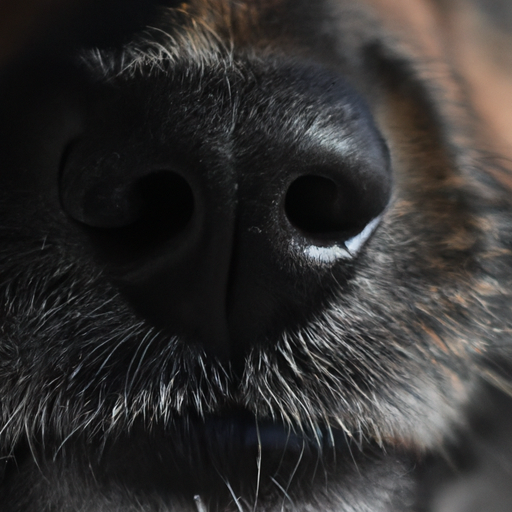Have you ever noticed those long, rigid hairs on your dog’s muzzle and wondered what purpose they serve? Welcome to the world of dog whiskers. These seemingly simple structures are incredibly complex and serve a multitude of functions. This article will take you on a journey of exploration to understand the importance of your canine friend’s whiskers.
How Whiskers Work
Whiskers, scientifically known as vibrissae, are different from the regular fur on your dog’s body. They are rooted much deeper in the dog’s skin and are surrounded by nerves that send sensory information to the brain.
Think of whiskers as an advanced radar system. Whenever your dog’s whiskers come into contact with something, or even when they’re simply moved by a change in air currents, they vibrate. These vibrations are then picked up by the nerves and sent to the brain for interpretation.
Importance of Whiskers for Navigation
Imagine being in a pitch-dark room, unable to see anything. Now, imagine having a set of whiskers that can guide you around obstacles, helping you navigate through the darkness. That’s exactly what whiskers do for dogs.
- Spatial Awareness: Whiskers enable dogs to gauge their surroundings, helping them to avoid bumping into things. This is especially beneficial for dogs in low light conditions where their vision is limited.
- Size Up Spaces: Dogs use their whiskers to determine if they can fit into tight spaces. This is why you might see your dog sticking its head before entering a narrow passage.
- Detecting Danger: Whiskers can pick up minute changes in air currents, enabling dogs to sense potential threats even before they see or hear them.
Whiskers and Communication
Whiskers also play a critical role in canine communication. They help express a dog’s emotional state to other dogs and humans.
- Relaxed Whiskers: When a dog is relaxed, its whiskers will also be relaxed and will stick out sideways.
- Pulled Back Whiskers: If a dog is scared or defensive, it may pull its whiskers back against its face.
- Forward-facing Whiskers: When a dog is curious or excited, its whiskers might be pushed forward.
Impact of Trimming Dog Whiskers
You might be tempted to trim your dog’s whiskers for aesthetic reasons, but this can have negative consequences.
| Consequence | Explanation |
|---|---|
| Reduced Spatial Awareness | Without whiskers, dogs can bump into things more frequently, especially in low light conditions. |
| Increased Anxiety | Whiskers provide a sense of security for dogs. Trimming them can lead to increased anxiety and stress. |
| Impaired Communication | Trimming can affect a dog’s ability to communicate its emotional state to other dogs and humans. |
Frequently Asked Questions
Q: Can dog whiskers grow back if cut or damaged?
Yes, dog whiskers do grow back if they are accidentally cut or damaged.
Q: Do whiskers cause pain to dogs?
Yes, whiskers are highly sensitive. Any damage or pull can cause discomfort or pain to dogs.
Q: Can I trim my dog’s whiskers?
It’s not recommended to trim your dog’s whiskers as they serve important functions.
Q: Do all dogs have the same number of whiskers?
No, the number of whiskers can vary depending on the breed and individual dog.
Through this exploration of dog whiskers, it’s evident that these sensory tools are not just simple hairs but a critical component of a dog’s sensory and communication system. So, the next time you see your dog’s whiskers twitch, know they are hard at work!



